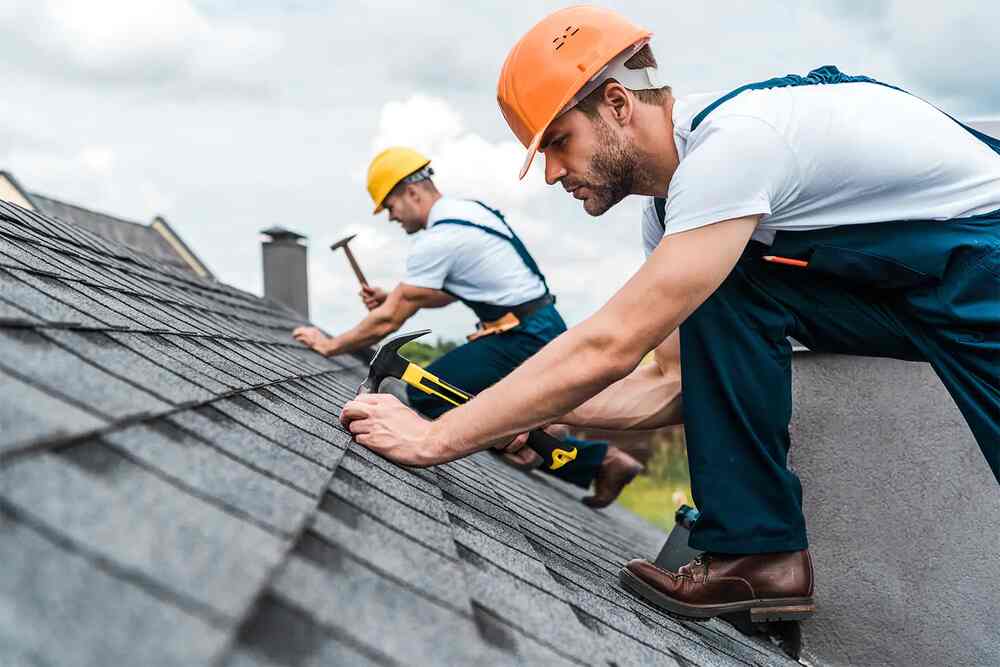The appearance of a home’s roof impacts its curb appeal. While structural strength and weather protection are essential, the visual impact of the roof can’t be underestimated. With the right roofing materials, homeowners can dramatically improve the overall look and value of their property. Understanding the different types of roofing material will help guide smarter decisions that improve both form and function.
Here are five of the best roofing material options for enhancing curb appeal, along with key factors to consider.
Table of Contents
Key Takeaways✔ Asphalt shingles offer an affordable, versatile solution that suits nearly any home style while boosting curb appeal on a budget. ✔ Metal roofing provides a sleek, durable, and energy-efficient option, especially ideal for modern designs and extreme climates. ✔ Slate roofing delivers unmatched elegance and longevity, making it a premium choice for high-end or historic homes with strong structural support. ✔ Wood shakes and shingles bring natural charm and a unique, rustic look, best suited for traditional homes in mild climates with regular upkeep. ✔ Clay and concrete tiles create bold, timeless aesthetics and exceptional durability, perfect for Mediterranean-style homes in hot or coastal regions. |
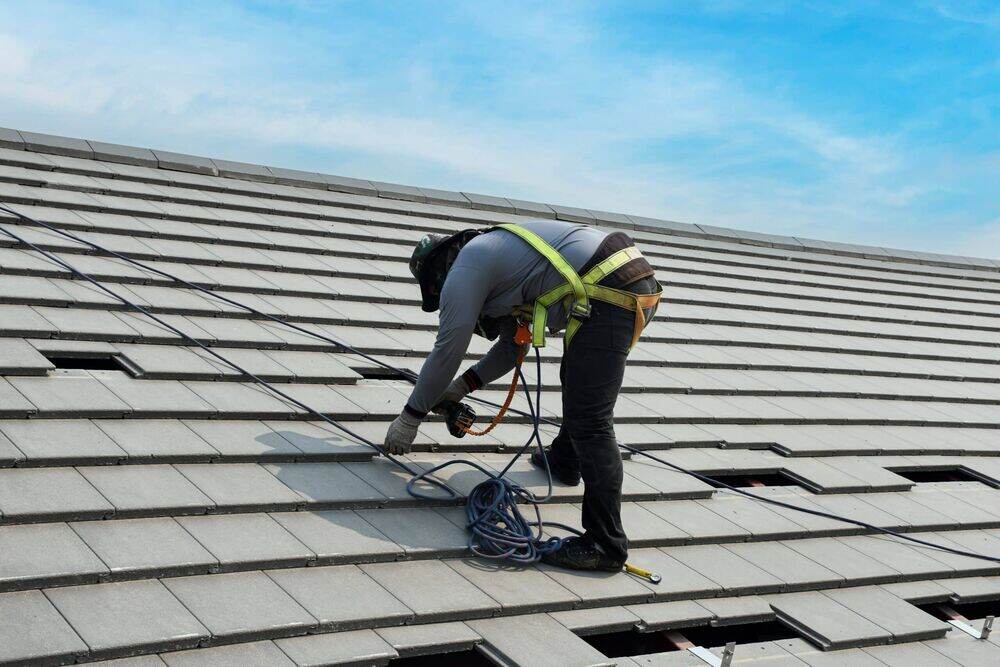
1. Asphalt Shingles
Installed on over 80% of new homes in the U.S., asphalt shingles are the most common roofing material. They’re economical, easy to install, and visually adaptable, making them a strong choice for a wide range of homes. Asphalt shingles remain a top contender among the different types of roofing material thanks to their accessibility, variety, and curb appeal performance.
Why It Enhances Curb Appeal
- Wide color and style selection: From earthy tones to bold contrasts, homeowners can match their shingles to virtually any exterior palette.
- Textured designs: Architectural shingles add depth and dimension, mimicking high-end materials like slate or wood shake.
- Blend with any home style: Whether Colonial, Ranch, Craftsman, or Contemporary, asphalt shingles can be tailored to suit.
Durability and Performance
- Lifespan of 15–30 years: Depending on the grade and installation quality.
- Advanced coatings: Many shingles now come with UV-blocking granules and algae-resistant technology to maintain appearance.
- Moderate weather resistance: Can handle most rain, wind, and heat when installed properly.
Additional Benefits
- Cost-effective repairs: Damaged shingles are easy to replace individually.
- Lightweight material: Puts less stress on the home’s structure.
- Fast installation: Ideal for time-sensitive roofing projects.
Ideal For
- Homeowners seeking affordable yet attractive roofing
- Fast roof replacements after damage or age
- Projects needing flexible design compatibility
2. Metal Roofing
Metal roofing is rapidly becoming a favorite for homeowners who want low maintenance, high performance, and modern elegance. It offers architectural appeal while also excelling in durability and energy efficiency. For those who want a bold, modern aesthetic paired with incredible longevity, metal is one of the best roofing material options among today’s types of roof materials.
Why It Enhances Curb Appeal
- Sleek, contemporary appearance: Clean lines and smooth finishes suit modern and minimalist aesthetics.
- Color flexibility: Available in vibrant hues, matte tones, and metallic sheens like zinc, copper, or galvanized steel.
- Shape variety: Comes in standing seam, corrugated panels, and metal shingles—each offering a different design vibe.
Durability and Performance
- Lifespan of 40–70+ years: Often outlasts other materials with minimal upkeep.
- Fire- and wind-resistant: Great for wildfire-prone or storm-heavy regions.
- Energy-efficient: Reflective coatings help lower cooling costs in hot climates.
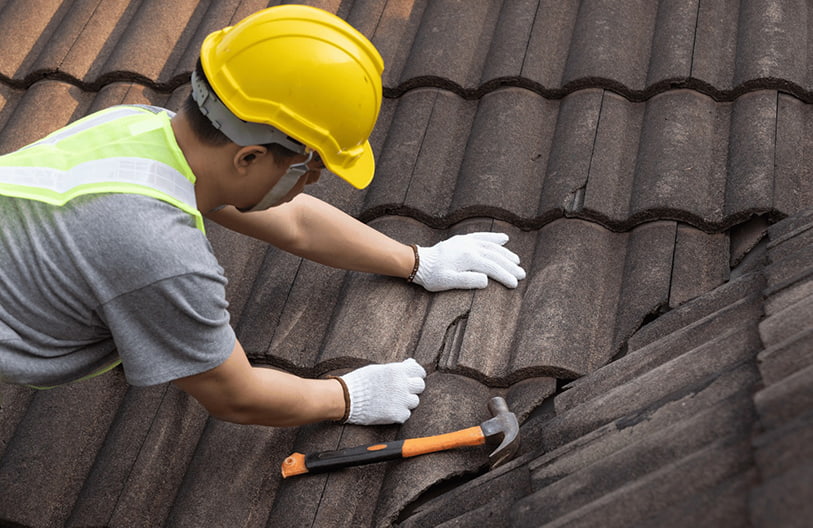
Additional Benefits
- Eco-friendly: Often made from recycled materials and fully recyclable at end of life.
- Lightweight yet strong: Easier on structural support compared to slate or tile.
- Low maintenance: Rarely requires repairs or frequent inspections.
Ideal For
- Homes with modern, industrial, or rustic designs
- Homeowners focused on sustainability
- Properties in extreme climates (heat, hail, snow, wind)
3. Slate Roofing
Slate is a premium roofing material prized for its elegance, durability, and natural stone composition. It adds lasting visual impact while performing exceptionally well under extreme conditions. Among the different types of roofing material, slate is the best roofing material for unmatched beauty and extreme longevity, though it requires a strong structure and a larger upfront investment.
Why It Enhances Curb Appeal
- Distinctive appearance: Each tile has unique variations in texture and color, ranging from gray and black to green, purple, or red.
- Upscale elegance: Its refined surface enhances historic and luxury properties alike.
- Architectural authenticity: Commonly used in traditional European or Colonial-style homes for an authentic, timeless look.
Durability and Performance
- Centuries-long lifespan: A slate roof can easily last from 50 and even up to 200 years when properly installed and maintained.
- Highly resistant to elements: Immune to fire, water absorption, rot, and insect damage.
- Minimal fading: Color does not deteriorate with sun exposure, preserving visual appeal over decades.
Additional Benefits
- Low maintenance needs: Once installed, slate requires very little intervention.
- Excellent resale value: Boosts home value significantly due to its high-end profile.
- Natural insulation: Helps regulate indoor temperature and improve energy efficiency.
Ideal For
- High-end residential architecture
- Homeowners planning to stay long-term
- Properties with reinforced roof structures to support weight
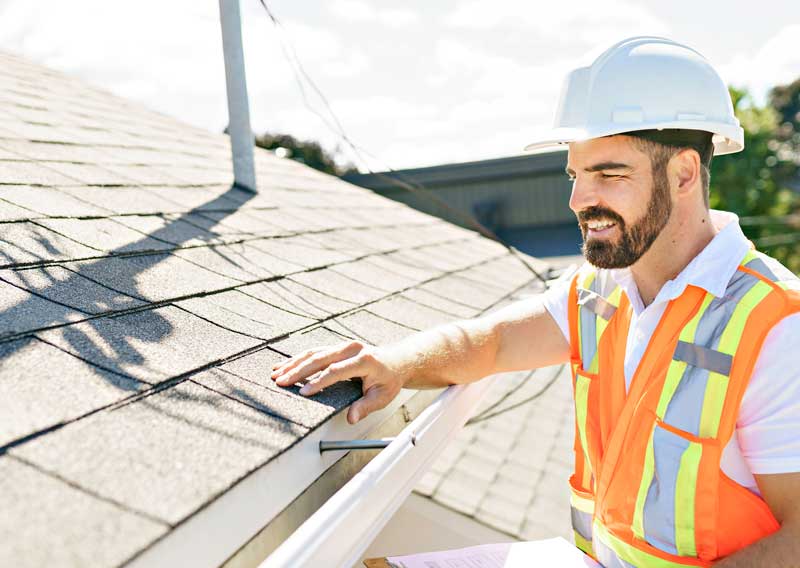
4. Wood Shakes and Shingles
Wood roofing offers a handcrafted, earthy appearance that’s ideal for homes wanting a cozy, lived-in aesthetic. Available as wood shingles (smooth and uniform) or shakes (rough and irregular), both add textural dimension and warmth.
Wood shakes and shingles stand out among the different types of roofing material for their organic, rustic charm, but they do require consistent upkeep. Still, for those seeking a warm, textured finish, they remain one of the best roofing material choices.
Why It Enhances Curb Appeal
- Natural aesthetic: Adds visual softness and charm that blends well with wooded or rural surroundings.
- Aging with character: Develops a beautiful patina over time, enhancing the rustic vibe.
- Unique to each home: No two roofs look exactly alike, thanks to the grain patterns and handcrafted finishes.
Durability and Performance
- Moderate lifespan: Typically lasts 20–40 years, depending on wood species and care.
- Performance varies by wood type: Cedar and redwood resist rot and insects better than untreated softwoods.
- Improved modern options: Pressure-treated and fire-retardant products are available for safer, longer-lasting results.
Additional Benefits
- Eco-conscious option: Renewable resource when sourced responsibly.
- Natural insulation: Helps maintain interior comfort by regulating heat and cold.
- Lighter than slate or tile: Often compatible with existing roof structures.
Ideal For
- Craftsman, cottage, or historic-style homes
- Homeowners who prioritize aesthetic authenticity
- Mild or temperate climates with moderate rainfall
5. Clay and Concrete Tiles
Clay and concrete tiles are iconic roofing options that bring bold design, structural performance, and timeless appeal to any home. With distinct profiles and rich finishes, they are commonly seen on homes with Mediterranean, Spanish, Tuscan, or Mission-style architecture. Among the different types of roofing material, clay and concrete tiles offer the best roofing material solution for homeowners seeking architectural drama and enduring value. Their visual impact and lifespan make them a top-tier choice for enhancing curb appeal.Why It Enhances Curb Appeal
- Dramatic profile options: Choose from S-curved tiles, flat slabs, barrel tiles, and more to create architectural interest.
- Rich, earthy colors: Terracotta, sand, charcoal, and custom-glazed finishes add visual depth and regional flair.
- Cohesive design language: These tiles complement stucco exteriors, arched doorways, wrought iron, and other classical design features.
Durability and Performance
- Exceptional longevity:
-
- Clay tiles: Often last 75–100 years or more.
- Concrete tiles: Typically last 40–50 years with minimal degradation.
- High resistance: Withstand fire, UV exposure, rot, pests, and harsh winds.
- Thermal performance: Provide excellent insulation, helping reduce energy use in hot climates.
Additional Benefits
- Low maintenance needs: Rarely require repairs unless cracked by direct impact.
- Sound dampening: Heavier material helps reduce external noise.
- Color retention: Many tiles are baked with permanent pigments, resisting fading even after decades.
Structural Considerations
- Heavy weight: Both types of tiles require a strong roof deck or additional reinforcement.
- Professional installation required: Proper alignment and underlayment are essential to prevent water penetration.
Ideal For
- Properties in sunny, coastal, or wildfire-prone areas
- Homeowners investing in high-end, low-maintenance roofing
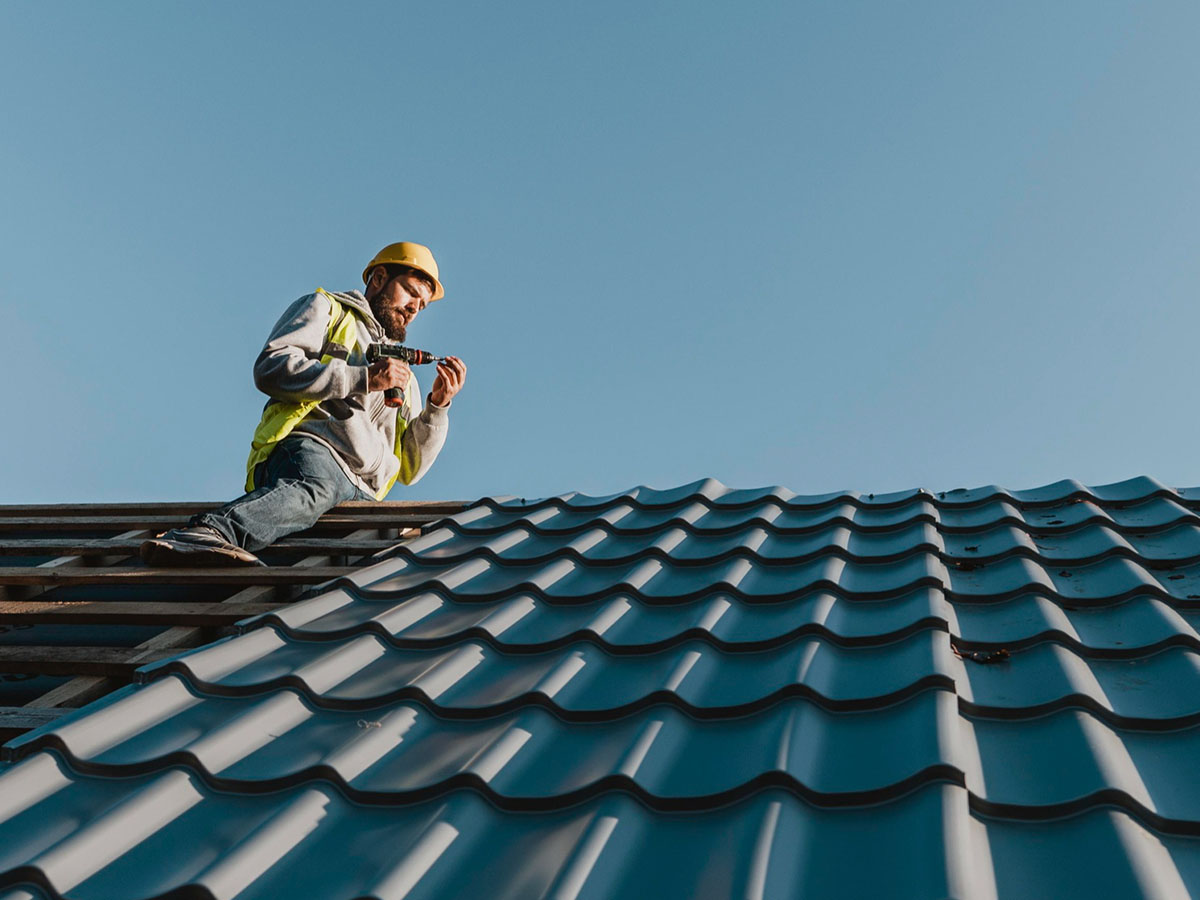
7 Factors to Consider When Choosing a Roofing Material
Selecting the best roofing material requires weighing more than just appearance. Each home has unique requirements based on its design, climate, budget, and structural conditions. Weighing each of these considerations helps homeowners make informed, confident choices when comparing the many types of roof materials.
The best roofing material is one that aligns with both aesthetic goals and long-term practical needs. Here are the most critical factors to consider when evaluating different types of roofing material:
1. Architectural Compatibility
- Design harmony: Certain materials naturally align with specific architectural styles (e.g., clay tiles with Mediterranean homes, slate with Colonial or European-inspired houses).
- Visual balance: A mismatch in material and design can detract from curb appeal rather than enhance it.
2. Local Climate Conditions
- Temperature tolerance: Materials like clay and concrete perform well in hot, dry climates, while metal is great for shedding snow in colder regions.
- Humidity and salt exposure: In coastal areas, corrosion-resistant materials like concrete or synthetic products are better suited than untreated metals or wood.
- Storm resilience: Impact-resistant roofing, such as metal or high-grade asphalt shingles, is ideal for areas prone to hail or windstorms.
3. Budget Constraints
- Upfront vs. long-term costs:
- Asphalt shingles are budget-friendly and widely available.
- Slate and tile are premium choices but may offer better value over time due to their long lifespan.
- Labor and installation costs: Heavier or more complex materials increase installation expenses.
4. Weight and Structural Load
- Load-bearing capacity: Heavy materials like slate or tile may not be suitable for older homes without structural reinforcement.
- Engineering needs: Reinforcing the roof deck can add time, complexity, and cost to a project.
5. Maintenance Requirements
- Upkeep level: Some types of roofing materials, such as wood shakes, demand ongoing maintenance to prevent rot, insect damage, or fire risk.
- Access and repair: Consider how easy it is to inspect and repair the material in case of damage or wear, as some types of roof materials are more accessible and easier to maintain than others.
- Coating and sealing: Certain products may require periodic treatments to retain appearance and functionality.
6. Lifespan and ROI (Return on Investment)
- Material longevity: The expected lifespan of a roofing material plays a major role in both long-term value and cost efficiency. While budget-friendly options may last 15–30 years, premium materials can endure for 40 to over 100 years with proper maintenance.
- Resale value: A durable, well-maintained roof can increase home value and reduce buyer hesitation.
- Warranty considerations: Longer-lasting products often come with extended warranties for peace of mind.
7. Environmental Impact
- Sustainable materials: Look for recyclable options like metal or clay.
Energy efficiency: Reflective surfaces and insulating properties can reduce HVAC usage and monthly utility costs.
Why Work with Professional Roofers for Expert Installation
Even the best roofing material won’t deliver its full potential without expert installation. A skilled roofing contractor understands the unique requirements of different types of roofing materials and ensures the system is built to last, visually appealing, and fully compliant with local codes and manufacturer standards.Benefits of Hiring a Professional Roofer
- Material Expertise: Professionals understand the pros and cons of all roofing materials. They match products to the home’s architecture, climate conditions, and budget.
- Accurate Installation: Each roofing type has unique installation techniques. Certified installers follow exact procedures to prevent future issues like leaks, sagging, or voided warranties.
- Code Compliance: Licensed roofers stay updated on local and national building regulations. They ensure the installation meets structural and safety requirements, especially for heavy materials like slate or tile.
- Workmanship and Product Warranties: Many professional roofers offer labor warranties that back their craftsmanship. They also follow manufacturer protocols to keep product warranties valid.
- Proper Tools and Safety Practices: Professionals use industry-specific tools for precision and speed. They follow OSHA safety standards, reducing the risk of injury or damage during the job.
- Project Efficiency: Experienced crews complete jobs faster and with fewer errors. Their organized approach limits disruptions and prevents costly mistakes.
- Post-Installation Support: Reputable contractors offer maintenance plans, inspection services, and emergency repair options after the job is done.
How to Choose the Right Roofing Contractor
- Check Manufacturer Certifications: Brands like GAF, Owens Corning, and CertainTeed certify installers who meet high training and quality standards.
- Verify Licensing and Insurance: Confirm the contractor holds a valid state license and carries general liability and workers’ compensation insurance.
- Review Testimonials and Ratings: Look for consistent positive feedback on platforms like Google, BBB, or Angi. Pay attention to how the company handles issues or disputes.
- Ask for a Portfolio: Request photos of completed jobs, especially those using the same roofing material you’re considering. Look for clean lines, consistent patterns, and attention to detail.
- Get a Detailed Estimate: A professional roofer will provide a clear, itemized quote that includes labor, materials, cleanup, and potential contingencies—tailored to the specific types of roofing materials being used.
Frequently Asked Questions
The best roofing material depends on your priorities—budget, appearance, and climate. Asphalt shingles are the most common due to affordability and design flexibility. For higher-end performance and curb appeal, metal, slate, or tile may be better options.
Slate is considered the most durable roofing material, often lasting over 100 years. Metal also offers excellent durability with a lifespan of 40–70 years. Both materials resist fire, wind, and pests when properly installed.
Slate and clay tile roofs are among the best long-term options due to their century-long lifespan. They require minimal maintenance and retain their appearance over decades. Though more expensive upfront, they offer superior value over time.
Modern synthetic roofing materials like polymer composites and solar-integrated shingles are among the newest options. These products aim to combine durability, efficiency, and style. They’re gaining popularity for their performance and eco-friendly benefits.
High-end materials like slate, metal, and clay tile add the most to a home’s resale value. These options boost curb appeal and are attractive to future buyers. A well-installed, durable roof signals quality and reduces future maintenance costs.
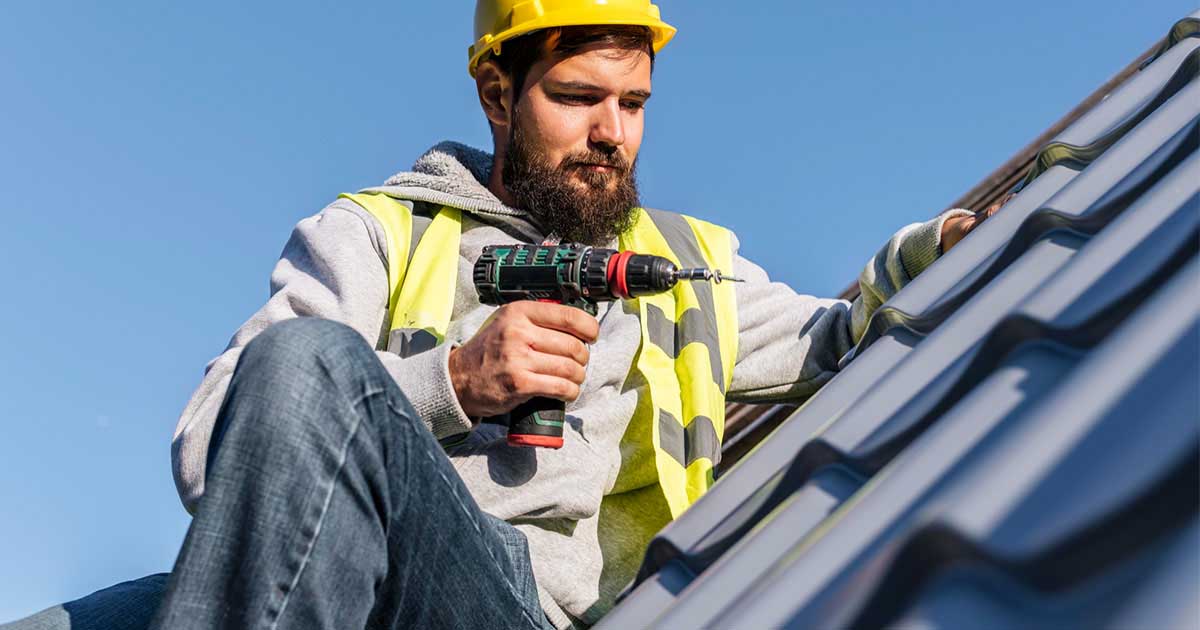
Ready to Upgrade Your Roof? Contact Roofer of Pleasant Valley Today!
If you’re looking to enhance your home’s curb appeal and invest in long-term protection, now is the perfect time to act. Roofer of Pleasant Valley proudly serves homeowners throughout Pleasant Valley, NY, offering expert guidance and flawless installation of the best roofing materials on the market. Whether you’re considering asphalt shingles, metal roofing, slate, wood shakes, or clay tiles, our team ensures every project meets the highest standards.
Residents in Pleasant Valley, NY, trust Roofer of Pleasant Valley for quality, professionalism, and exceptional customer service. From selecting the right roofing material to completing a seamless installation, our skilled contractors are here to help every step of the way.
If you’re in Pleasant Valley, NY, don’t settle for less—contact Roofer of Pleasant Valley today to schedule your free roofing consultation!

